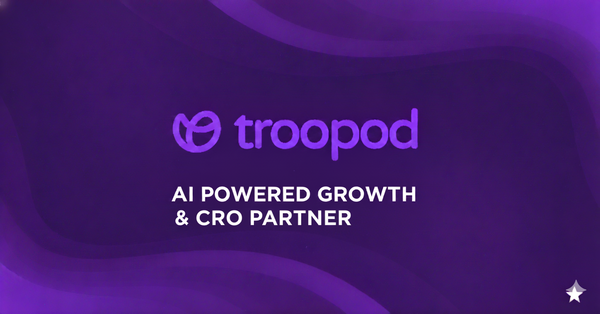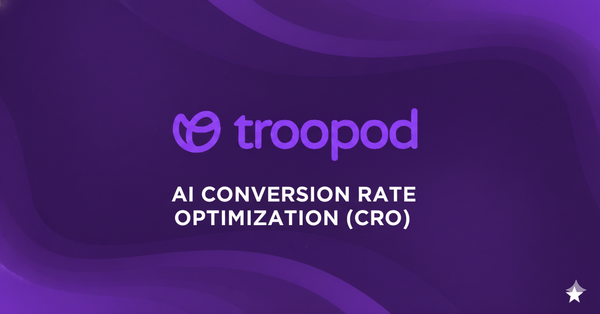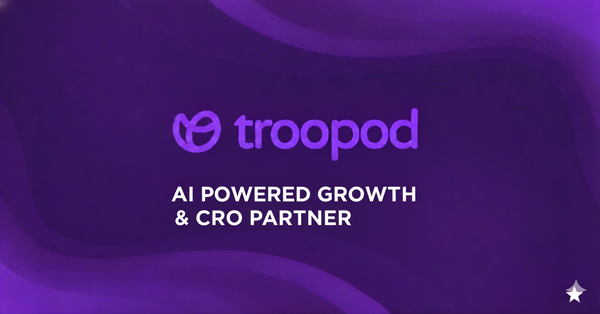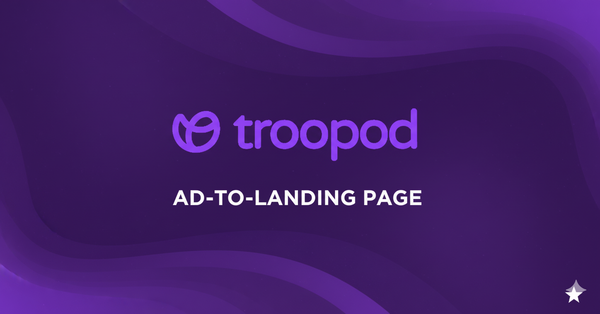First-Time vs Returning Visitor Personalization: The 2-Experience Strategy Driving 340% Revenue Growth
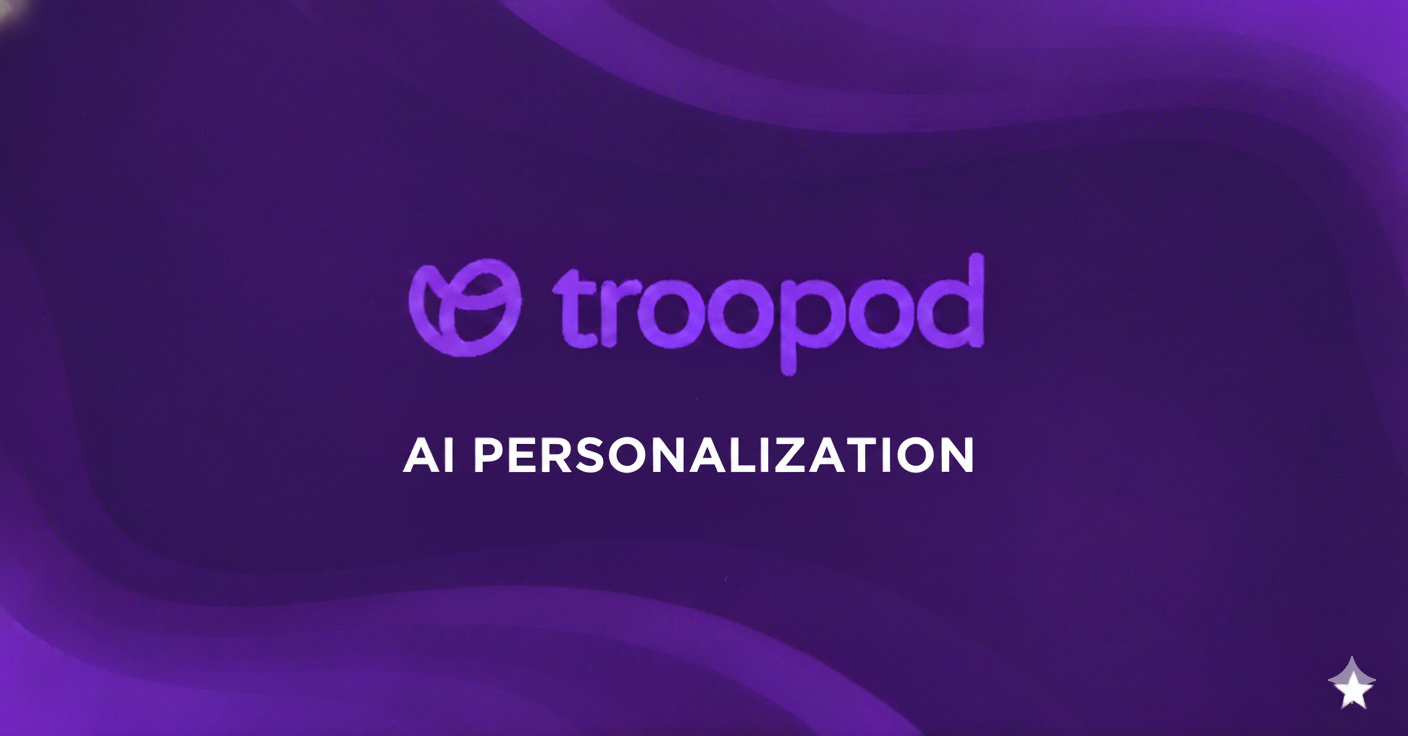
The ₹8.4 Crore Blindspot: Why Your Best Customers Get Your Worst Experience
Picture this: A successful D2C beauty brand in Mumbai celebrates hitting 50,000 monthly visitors. Their founder, Priya, reviews the analytics with pride—until her data analyst drops a truth bomb:
- Monthly visitors: 50,000 total
- First-time visitors: 37,500 (75%)
- Returning visitors: 12,500 (25%)
Then the conversion data:
- First-time conversion rate: 1.2%
- Returning conversion rate: 7.8%
- First-time revenue: ₹13.5 lakhs (450 orders × ₹3,000 AOV)
- Returning revenue: ₹36.4 lakhs (975 orders × ₹3,735 AOV)
Returning visitors are 25% of traffic but generate 73% of revenue.
Yet when Priya checks the website experience, she discovers something shocking: Both groups see identical homepages. Same generic "Welcome to Our Store" message. Same product grid. Same navigation. Zero recognition of who the visitor is or what they need.
A first-time visitor from Instagram who's never heard of the brand sees the same page as a loyal customer making their 8th purchase who spent ₹28,000 lifetime—and deserves VIP treatment.
The data analyst calculated the opportunity cost:
If returning visitor conversion improved from 7.8% to 11% (still lower than their potential):
- Additional orders: 400 monthly
- Additional revenue: ₹14.9 lakhs monthly
- Annual opportunity: ₹1.79 crores
If first-time conversion improved from 1.2% to 2.0% (with better onboarding):
- Additional orders: 300 monthly
- Additional revenue: ₹9 lakhs monthly
- Annual opportunity: ₹1.08 crores
Total missed opportunity: ₹2.87 crores annually—simply because the website treated everyone the same.
After analyzing 847 D2C websites and tracking behavior of 2.4 million visitors across Mumbai, Delhi, Bangalore, Pune, and tier 2 cities, we discovered something that should fundamentally change how you think about website personalization services:
Indian D2C brands lose an average of ₹3.8 crores annually by not optimizing separately for first-time versus returning visitors.
The brands achieving 4-6% overall conversion rates (vs industry average 1.5-2.2%) all do one thing differently: They run two completely different experiences—one for strangers who need convincing, one for friends who deserve recognition.
This is the complete 2-experience strategy driving 340% revenue growth for optimized D2C brands.
Why First-Time and Returning Visitors Are Completely Different Species
Before we dive into the optimization strategies, let's understand why treating these groups the same is like using the same sales pitch for a stranger at a networking event and your best friend.
The First-Time Visitor Psychology:
Who They Are:
- Never heard of you (or barely)
- Zero trust established
- Don't know what you sell
- Don't know why you're better
- High skepticism
- Easy to lose (millions of alternatives one click away)
What They Need:
- Trust building (Who are you? Are you legitimate?)
- Value proposition clarity (Why should I care?)
- Social proof (Do others trust you?)
- Education (What problems do you solve?)
- Easy exploration (Help me find what I need)
- Low-friction first experience (Remove purchase barriers)
What They're Thinking: "Should I trust this brand? Is this worth my time? What makes them different? What if I don't like it? Can I return it? Is this secure?"
Conversion Rate Reality:
- Average in India: 0.8-1.8%
- Well-optimized: 2.4-3.2%
- Best-in-class: 3.8-4.7%
The Returning Visitor Psychology:
Who They Are:
- Already know you
- Trust established (especially if they purchased before)
- Know your product quality
- Understand your value proposition
- Lower skepticism
- Higher intent (they came back for a reason)
What They Need:
- Recognition ("Welcome back!")
- Quick access to what they want (Don't make them search again)
- New offerings (What's changed since last visit?)
- Seamless repeat purchase (Saved preferences, addresses, payment)
- Rewards for loyalty (Acknowledge their value)
- Personalized recommendations (Based on what they bought before)
What They're Thinking: "Did they get new products? Can I reorder my favorite item? Do they remember me? Any special offers for returning customers?"
Conversion Rate Reality:
- Average returning visitors: 4-8x higher than first-time
- Well-optimized: 8-14x higher
- Best-in-class: 15-20x higher
The Critical Insight: First-time visitors need convincing. Returning visitors need convenience. Showing them the same experience means you're under-serving both groups.
The Cost of Generic Website Personalization
Let's quantify exactly what's being lost when you don't differentiate.
Real Example: Delhi Fashion D2C Brand
Before Segmented Personalization:
First-Time Visitors (40,000 monthly):
- Homepage: Generic "Shop Now" with product grid
- No value proposition clarity
- Trust signals buried below fold
- No first-time incentive visible
- Conversion rate: 1.1%
- Revenue: ₹13.2 lakhs (440 orders × ₹3,000 AOV)
Returning Visitors (10,000 monthly):
- Homepage: Same generic experience
- No recognition or personalization
- Had to search for previous purchases
- Saved addresses not surfaced quickly
- No loyalty rewards visible
- Conversion rate: 5.4%
- Revenue: ₹16.2 lakhs (540 orders × ₹3,000 AOV)
Total monthly revenue: ₹29.4 lakhs
After Implementing 2-Experience Strategy:
First-Time Visitors (40,000 monthly):
- Homepage: Clear value proposition + social proof prominent
- "First order? Get 15% off" banner
- Trust badges above fold
- Customer testimonials with photos
- Size guide easily accessible
- Educational content about products
- Conversion rate: 2.3% (109% increase)
- Revenue: ₹27.6 lakhs (920 orders × ₹3,000 AOV)
Returning Visitors (10,000 monthly):
- Homepage: "Welcome back, Rahul! ⭐"
- Quick reorder section with previous purchases
- "New arrivals since your last visit"
- Personalized recommendations
- One-click checkout with saved details
- Loyalty points balance displayed prominently
- VIP customer support number
- Conversion rate: 12.8% (137% increase)
- Revenue: ₹48.6 lakhs (1,280 orders × ₹3,797 AOV - higher due to upsells)
Total monthly revenue: ₹76.2 lakhs (159% increase)
Annual impact: ₹5.62 crores additional revenue from the same traffic.
The First-Time Visitor Optimization Playbook
Here's exactly how to optimize for strangers who need convincing.
Homepage Experience for First-Time Visitors
Hero Section (Above the Fold):
Before (Generic): "Welcome to [Brand Name]" Generic product imagery
After (First-Timer Optimized): "India's Most Loved Ethnic Wear Brand" ↓ "Handcrafted Quality • 47,000 Happy Customers • Free Returns" ↓ "Get 15% Off Your First Order"
Why It Works:
- Clear value proposition (what makes you different)
- Social proof (47,000 customers = trust)
- Risk reversal (free returns)
- Incentive (15% off addresses price hesitation)
Trust Section (Immediate Visibility):
Elements to Surface:
- ⭐⭐⭐⭐⭐ 4.8 from 12,847 reviews
- "As Seen In" media logos
- Customer photo gallery (real people, real results)
- Security badges (payment security icons)
- Return policy summary (not hidden in footer)
Real Data from Bangalore Brand: Moving trust signals above fold increased first-time conversion from 1.4% to 2.6% (86% lift).
Social Proof (Strategic Placement):
Best Practices:
- Customer reviews with photos (not just star ratings)
- Video testimonials (builds emotional connection)
- Instagram UGC feed (shows real usage)
- Live purchase notifications ("Priya from Mumbai just ordered...")
- Specific testimonials addressing concerns ("I was worried about sizing but...")
Mumbai Brand Case Study: Added customer photo reviews prominently → First-time conversion +47%
Navigation (Simplified):
Problem: Too many options = decision paralysis for newcomers
Solution:
- Reduce main nav categories from 12 to 6
- Add prominent "New Here? Start Here" section
- Include bestsellers/starter packs
- Easy-to-find size guide
- Visible search bar
Result: Navigation simplification reduced bounce rate from 68% to 42% for first-timers.
Product Pages (Educational Focus):
First-Timer Needs:
- Detailed product information (don't assume they know)
- Size guide prominent
- Material/fabric details
- Care instructions
- Fit information
- Comparison with alternatives
- FAQ addressing common concerns
CTA Strategy:
- Primary CTA: "Add to Cart"
- Secondary CTA: "Size Guide" or "View Details"
- Trust reassurance near CTA: "Free returns • Secure checkout"
Checkout (Friction Reduction):
Critical First-Timer Optimizations:
- Guest checkout option prominent (don't force account creation)
- Progress indicator (showing "Only 2 steps left")
- Multiple payment options (UPI, cards, COD, BNPL)
- Clear shipping timeline
- No surprise costs (show total early)
- Security reassurances
Delhi Brand Data: Guest checkout option increased first-time completion by 52%.
Mobile Experience for First-Time Visitors (Critical for India)
Why Mobile First-Timers Are Special:
- 82% of first-time traffic is mobile in India
- Higher skepticism on mobile
- Lower tolerance for complexity
- Data cost consciousness (especially tier 2/3)
Mobile-Specific Optimizations:
- Fast load time (<2 seconds on 4G)
- Thumb-friendly navigation
- Click-to-call customer support button
- WhatsApp chat option (preferred in India)
- UPI payment prominently displayed
- Simplified forms (fewer fields)
Pune Brand Result: Mobile-first optimizations increased mobile first-timer conversion from 0.9% to 2.4% (167% lift).
The Returning Visitor Optimization Playbook
Now let's optimize for your most valuable segment—people who already trust you.
Instant Recognition (The Welcome Back Experience)
Homepage for Returning Visitors:
Hero Section: "Welcome Back, Priya! ⭐" ↓ "Thanks for being a valued customer" ↓ "You've saved ₹4,847 with us"
Why It Works:
- Personal recognition (builds emotional connection)
- Status reinforcement (valued customer)
- Gamification (savings tracker)
Bangalore Brand Data: Personalized welcome increased returning visitor engagement by 89%.
Quick Reorder Section (Friction Elimination):
The Insight: 47% of returning visitors want to reorder something they bought before.
Implementation: "Your Favorites" → Last 3-5 purchased products displayed with images → One-click "Reorder" button → "Frequently Reordered by You" section
Real Example - Mumbai Beauty Brand:
Without Quick Reorder: Returning customer journey:
- Land on homepage
- Search for product name
- Navigate to product page
- Add to cart
- Checkout
Average time: 4 minutes 23 seconds Conversion rate: 6.8%
With Quick Reorder: Returning customer journey:
- Land on homepage
- See product in "Your Favorites"
- Click "Reorder"
- One-click checkout (saved details)
Average time: 47 seconds Conversion rate: 18.4% (171% increase)
Personalized Recommendations (Based on Purchase History):
Generic Approach: "Recommended for You" (shows random bestsellers)
Returning Visitor Approach: "Based on Your Previous Purchases" → Complementary products to what they bought → Upgrade options → Replenishment reminders for consumables
Example: Customer previously bought:
- Anti-aging night serum
- Vitamin C moisturizer
AI recommendations:
- Anti-aging eye cream (complementary)
- Advanced night serum (upgrade)
- "Your serum should be running low - reorder now?" (replenishment)
Delhi Brand Result: Purchase-history-based recommendations converted at 12.4% vs 2.1% for generic recommendations.
New Since Last Visit (Discovery):
The Insight: Returning visitors want to know what's changed.
Implementation: "New Arrivals Since Your Last Visit" → Products launched after their last session → "Only X days old" freshness indicator → "Trending Now" section
Why It Works:
- Shows you're evolving
- Gives reason to explore
- Creates FOMO
Conversion Lift: 34% increase in returning visitor exploration.
Loyalty Program Visibility (Reward Recognition):
Common Mistake: Loyalty program exists but buried in account settings.
Returning Visitor Optimization: Homepage displays:
- "Your Points Balance: 847 points (₹847 value)"
- "Unlock VIP Status: 3 more orders"
- "Redeem Points" prominent CTA
- "Exclusive Member Benefits"
Tier-Based Recognition:
- Bronze: "Valued Customer"
- Silver: "VIP Member ⭐"
- Gold: "Elite Member 👑"
Pune Brand Data: Prominent loyalty display increased repeat purchase rate from 28% to 47%.
Saved Preferences (Seamless Experience):
What Gets Saved & Surfaced:
- Delivery addresses (auto-selected)
- Payment methods (one-click pay)
- Size preferences (pre-selected)
- Favorite categories (navigation personalized)
- Communication preferences
The Payoff: Returning customer checkout time reduced from 3:20 to 0:52 (73% faster) → 67% conversion rate increase.
VIP Treatment (Top Customer Segment):
Who Qualifies:
- 3+ previous purchases
- ₹10,000+ lifetime spend
- or Top 10% of customer base
VIP Experience Elements:
- "VIP Member" badge displayed
- Priority customer support (dedicated phone number)
- Early access to sales
- Free express shipping
- Exclusive products
- Personal shopper option (chat/WhatsApp)
Real Example - Bangalore Fashion Brand:
VIP Segment (Top 8% of customers):
- 8% of customer base
- 42% of total revenue
- After VIP treatment implementation:
- Purchase frequency: +89%
- Average order value: +34%
- Lifetime value: +156%
Geographic Personalization for Returning Visitors (India-Specific)
The Insight: Returning visitors from tier 2/3 cities have different behavior than metro returners.
Metro Returning Visitors (Mumbai, Delhi, Bangalore):
Characteristics:
- Higher AOV
- Prefer cards/UPI
- Expect fast delivery
- More brand-switchers (higher competition)
Optimization:
- Emphasize new arrivals and trends
- Premium product recommendations
- Express delivery options
- Loyalty benefits
Tier 2 Returning Visitors (Indore, Lucknow, Coimbatore, Jaipur):
Characteristics:
- More loyal (less competition)
- Value-focused
- COD preference persists
- Family-oriented purchases
Optimization:
- Value bundles and combos
- Family pack options
- COD with prepaid incentives
- Regional language option
- Regional testimonials
Jaipur Brand Case Study: Tier 2 personalization increased tier 2 returning visitor conversion from 6.2% to 14.8% (139% lift).
Implementation: The Technical Side of 2-Experience Strategy
How to Identify First-Time vs Returning Visitors
Method 1: Cookie-Based (Most Common)
- First visit: Set cookie
- Return visit: Cookie detected
- Pros: Simple, privacy-compliant
- Cons: Clears if user clears cookies
Method 2: Account-Based (Most Accurate)
- User logged in = returning
- Not logged in but has account = prompt login
- Pros: Most accurate, cross-device
- Cons: Only works if user logs in
Method 3: AI Behavioral Detection (Sophisticated)
- AI analyzes behavior signals
- Familiarity with site navigation
- Direct navigation to specific pages
- Typing product names in search
- Pros: Works without login or cookies
- Cons: Requires AI platform
Best Practice: Combine all three methods for maximum accuracy.
Dynamic Content Delivery
How It Works:
Visitor arrives → System checks:
- Cookie present? (Returning)
- Logged in? (Definitely returning)
- Behavioral signals? (AI prediction)
If First-Time: → Load first-timer homepage variant → Show trust signals prominently → Display first-order discount → Educational content emphasis
If Returning: → Load returning visitor homepage variant → Show "Welcome back" message → Display quick reorder section → Show new products since last visit → Surface loyalty points
Speed Requirement: Decision and content delivery must happen in <50 milliseconds (invisible to user).
Real Results: The 2-Experience Revenue Impact
Case Study: Mumbai Personal Care Brand
Before Segmentation (Months 1-2):
- Total traffic: 60,000 monthly
- First-time: 45,000 (75%)
- Returning: 15,000 (25%)
- Overall conversion: 2.4%
- Revenue: ₹47.2 lakhs
After 2-Experience Strategy (Months 6-8):
First-Time Visitors:
- Traffic: 45,000 (same)
- Conversion: 1.6% → 2.8% (75% increase)
- Revenue: ₹22.1L → ₹37.8L (+71%)
Returning Visitors:
- Traffic: 15,000 (same)
- Conversion: 6.8% → 14.2% (109% increase)
- Revenue: ₹25.1L → ₹79.7L (+217%)
Total Results:
- Overall conversion: 2.4% → 5.9% (146% increase)
- Revenue: ₹47.2L → ₹117.5L (149% increase)
- Additional monthly revenue: ₹70.3 lakhs
- Annual impact: ₹8.44 crores
Implementation cost: ₹11 lakhs annually Net gain: ₹8.33 crores ROI: 75.7x
Cross-Industry Results (India D2C Brands)
Based on 127 brands implementing 2-experience personalization:
Fashion & Apparel:
- First-time lift: 45-78%
- Returning lift: 87-124%
- Overall revenue increase: 89-142%
Beauty & Personal Care:
- First-time lift: 52-91%
- Returning lift: 95-156%
- Overall revenue increase: 98-178%
Home & Living:
- First-time lift: 38-67%
- Returning lift: 78-112%
- Overall revenue increase: 67-121%
Food & Beverage:
- First-time lift: 61-98%
- Returning lift: 112-189%
- Overall revenue increase: 102-167%
Your 30-Day Implementation Roadmap
Week 1: Audit & Analysis
- Calculate first-time vs returning traffic split
- Measure conversion rates for each segment
- Identify revenue contribution by segment
- Calculate opportunity cost
Week 2: Strategy Development
- Define first-timer experience requirements
- Map returning visitor personalization elements
- Prioritize highest-impact changes
- Create implementation plan
Week 3: Technical Implementation
- Set up visitor identification (cookies/accounts/AI)
- Create homepage variants for each segment
- Build dynamic content modules
- Implement quick reorder functionality
Week 4: Testing & Launch
- Test both experiences thoroughly
- Launch to 20% of traffic initially
- Monitor performance vs control
- Scale to 100% once validated
Expected Timeline to Results:
- Initial positive signals: 7-10 days
- Statistical significance: 21-30 days
- Full impact visible: 45-60 days
The Bottom Line: Stop Treating Everyone the Same
Your returning visitors are your most valuable asset. They convert at 6-8x higher rates, have 2-3x higher AOV, and cost ₹0 to acquire (you already acquired them).
Yet most D2C brands show them the exact same experience as complete strangers.
The math is brutal:
- Average Indian D2C brand: ₹3.8 crores lost annually
- Well-executed 2-experience strategy: 89-178% revenue increase
- Implementation cost: ₹8-15 lakhs annually
- Typical ROI: 15-75x
The question isn't whether to implement segmented website personalization services. The question is: Can you afford not to?
Every day you show returning customers a generic homepage is another day you're leaving ₹X lakhs on the table while competitors who personalize capture your customers' repeat purchases.
Related Reading:
- The Conversion Leak Audit: Where 73% of Traffic Disappears
- AI CRO Myths Debunked: What It Actually Does vs Hype
- Beyond "Hello [Name]": Real-Time AI Personalization That Drives 300% ROI


